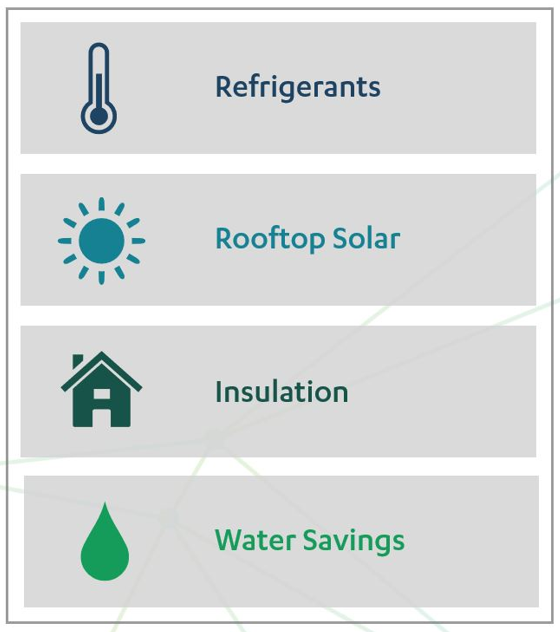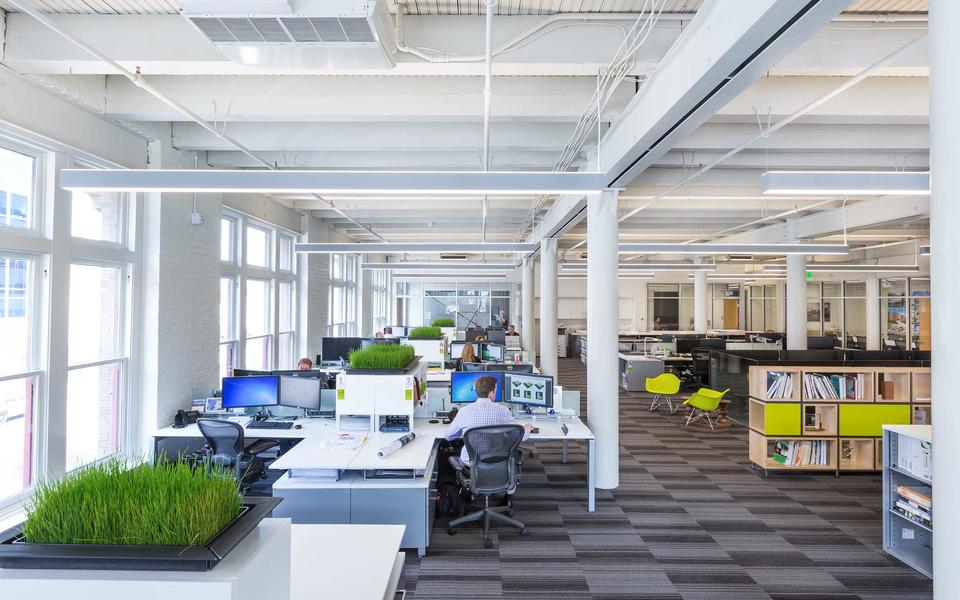High performance & sustainability
The Drawdown Illinois Summit provides the perfect place to keep the conversation going.
To truly reduce carbon across Illinois, throughout the Chicagoland region and in the city of Chicago, every building professional and every community must be engaged in the adoption of vetted carbon-drawdown strategies and solutions.
That's why Pepper and the Illinois Green Alliance came together to sponsor Drawdown Illinois – the first annual summit to keep people talking about how to scale carbon solutions in Illinois.
What is the Drawdown Summit? Through expert panels, discussions and action planning, the Drawdown Summit was designed to engage the green building industry and community partners to advance and equitably scale the adoption of "no-regrets" strategies that not only reverse carbon pollution but strengthen the health and livability of our neighborhoods.
According to Pepper's Vice President of High Performance and Sustainable Construction Susan Heinking, AIA, LEED Fellow, much of what was discussed at the Drawdown Summit can be traced back to a basic premise – we all want to be healthy.
"Since we spend an average of 90 percent of our time indoors," said Heinking, "buildings can have a huge impact on our health and immune system, as well as the planet we all share. Buildings account for 39 percent of all the greenhouse gases emitted into the atmosphere through the energy they use. That's just energy use during operation. Imagine how much greenhouse gases are emitted when you also take into account the water and materials that buildings use." More greenhouse gases result in more air pollution. This can threaten our health by affecting the food we eat, the water we drink, the air we breathe and the weather we experience.
"Drawdown aims to draw down these greenhouse gases from the atmosphere," Heinking continued. "Think of it as removing them or keeping them from getting into the atmosphere in the first place. One way to accomplish this is to incorporate tools and strategies that will create higher performing, more efficient buildings, which will be healthier for the planet and for the people who occupy the spaces inside."
At Pepper, we are working with four primary Drawdown strategies that we believe will have a substantial impact.
Refrigerant types are a hot topic. Common refrigerants that are used in building mechanical systems are 10,000 times hotter than CO2. A ban on these common refrigerants will go into effect in five years, so we are raising awareness of next-generation refrigerants that are more environmentally friendly and compatible with future mechanical systems.
Keeping it clean. By utilizing cleaner energy sources and renewable technology – specifically solar photovoltaic panel technology – we can eliminate greenhouse gas emissions.
Wrap solutions around a building's envelope – the roof, walls and floor. We want to look at the thermal values that make up the building's skin so we are providing an efficient, thermally comfortable space for the occupants inside.
Water savings contribute more than a drop in the bucket. Many cities in America are currently running out of precious fresh-water resources. If our buildings demand less water by using low flow/flush fixtures and reclaimed water strategies, we can reduce our water demand as well as the amount of water that requires treatment, which will also reduce our community energy demand and result in less air pollution.
Introducing the Man with the Plan: Paul Hawken
These types of strategies and solutions were discussed freely at the Drawdown Summit. Many of them can be connected back to a common source of inspiration, Paul Hawken's book Drawdown—The Most Comprehensive Plan Ever Proposed to Reverse Global Warming. In addition to being the summit's keynote speaker, Hawken is also an environmentalist, entrepreneur and activist who has dedicated his life to environmental sustainability and changing the relationship between business and the environment. He is one of the environmental movement’s leading voices and a pioneering architect of corporate reform with respect to ecological practices.
Hawken's book was developed in conjunction with more than 200 scientists and is considered one of the most comprehensive plans ever proposed to solve our environmental challenges. Drawdown describes the 100 most substantive solutions and provides the history, the carbon impact, the relative cost and savings and the path to adoption for each. All the solutions modeled are real, meaning they are already in place, well understood, analyzed based on peer-reviewed science and are expanding around the world.
Pepper Executive Vice President Jake Pepper had the privilege of spending time with Hawken and introducing him to the summit audience. His remarks included the following:
“I will say that Paul is a bit of a renaissance man. He has done so many different things throughout his life, and he truly is one of the great minds of our time. He will be a good steward of the world’s environmental movement and has an incredible ability to focus on real solutions.”
Insights Drawn from the Drawdown Summit
More than 500 people participated in this year's inaugural Drawdown Summit and all indications are that they will be back for more. It was an excellent opportunity for the Illinois design and construction communities, as well as others from throughout our industry, to gather, network and focus on some of the most challenging issues we currently face here and around the world.
If you were not able to attend this year, here are some insights that members of the Pepper High Performance team, who participated in the sessions, gathered and shared:
Moon Shots
In 1962, the race to the moon sparked innovation that inspired over 2,000 different technologies. The building industry is in that same moment now. By integrating carbon drawdown, Pepper hopes to capture these innovations beyond just high performance and sustainability.
Juanita G., High Performance Team, Illinois
Regeneration
There’s no point in waiting. Now is the time for clients to future-proof their buildings. According JP Morgan, 30 percent of all car sales will be electric vehicles by 2025 in the US. It’s time to talk about charging stations with our clients.
Toju E., High Performance Team, Illinois
A Growing Population
Construction will play a huge role as more buildings accommodate the growing population. Using zero-carbon and resiliency strategies such as mechanical rooms at the second floor or higher, carbon-cure concrete and renewable energy technologies ensure a healthier future for us all.
Natalia A., High Performance Team, Illinois
Public Health
Reaching zero-carbon by 2050 is a public health issue that is continually being pushed at local levels. Expect regulations and codes that focus on energy efficiencies, wellness and renewable technologies that will affect how buildings are built and maintained in the future.
Evan C., High Performance Team, Ohio
Over Engineering
Building systems can end up being too complex for facility managers to operate efficiently after turnover. Look for designers to include Operations and Maintenance personnel in the preconstruction phase of a project. We can help close this gap by ensuring proper training takes place at close-out, which will result in lower operating costs and reduce environmental impacts for our clients.
Calvin Y., High Performance Team, Indiana
Carbon Sequestering Materials
The industry is moving from low-embodied carbon materials to carbon sequestered materials. What’s the difference? Low-embodied materials involve reduced carbon emission during manufacturing, while carbon sequestering holds carbon within the product for life when it is manufactured. For example, a tree absorbs carbon when it's alive and wood studs hold on to that carbon for life.
Connor R., Operations Project Engineer, Illinois
It's Electrifying
Net Zero construction is not necessarily a cost premium and is actively being implemented into affordable housing communities. These buildings will be outfitted and future proofed as the grid brings on more clean-energy electric sources.
Josh D., Operations Project Engineer, Illinois
To learn more about the Drawdown Summit or additional programs or efforts that are taking place in the area, visit www.illinoisgreenalliance.org.



